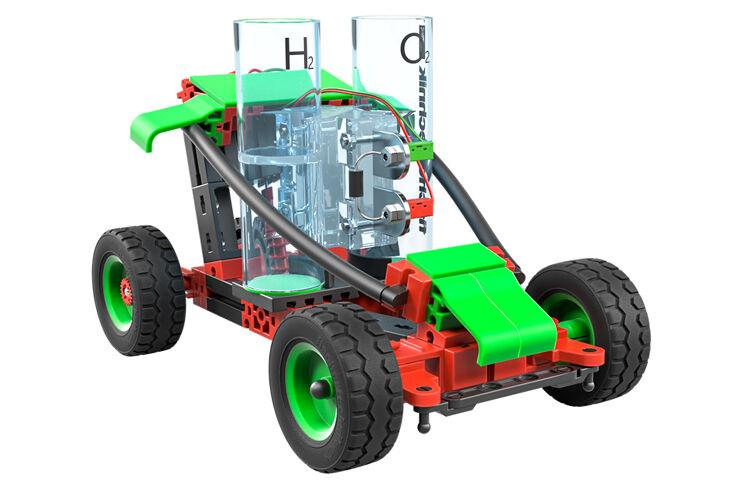- Home
- Toys
- E-Learning
- H2 Fuel Cell Car
From a child's room to a small laboratory
How does a fuel cell work? How can you use it to generate hydrogen? The H2 Fuel Cell Car teaches students about this exciting topic. They can use the fuel cell and vehicle to investigate the properties of hydrogen. They can also build interesting additional models in conjunction with the Green Energy building set.
Please note the safety instructions at the end!

WARNING!
For use by children over the age of 10 only. To be used only under the close supervision of adults, who have taken the necessary precautions described in the experiments kit. Read the instructions before use, follow them and keep them ready to hand.
They contain instructions for parents and these must be followed. Keep the packaging and instructions, as they contain important information. Hydrogen is produced during the experiment. Hydrogen can form an explosive mixture with atmospheric oxygen. Therefore, all ignition sources must be removed before carrying out the experiment.
Advice for supervising adults
This experiments kit is only intended for use by children over the age of 10 years.
The instructions should enable adults to assess the experiment's suitability for the child concerned.
The Fuel Cell kit's fuel cell may only be used to operate fischertechnik models.